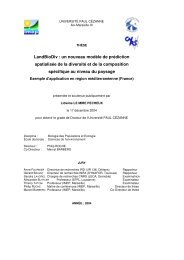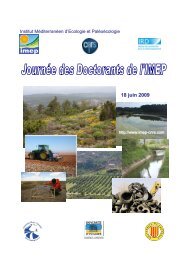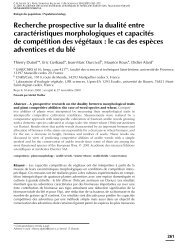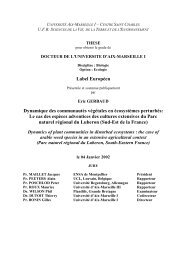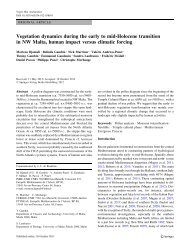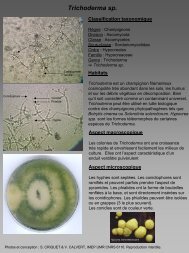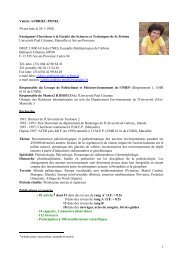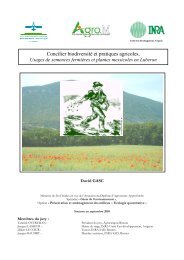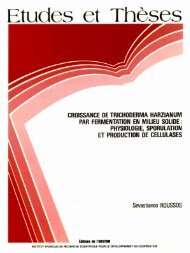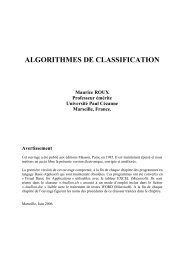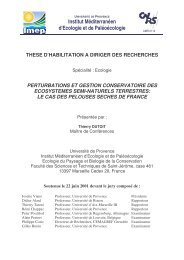UNIVERSITÉ PAUL CÉZANNE, AIX MARSEILLE III - IMEP
UNIVERSITÉ PAUL CÉZANNE, AIX MARSEILLE III - IMEP
UNIVERSITÉ PAUL CÉZANNE, AIX MARSEILLE III - IMEP
Create successful ePaper yourself
Turn your PDF publications into a flip-book with our unique Google optimized e-Paper software.
Résultats et discussion. Chapitre 5: Disponibilité des substrats oléicoles<br />
Nowadays, in most countries which still use the three phase extraction technology, the<br />
current practice to deal with OMW consists either to use it as amendment in olive fields or to<br />
store it in evaporation ponds in order to reduce the volume to dispose off. Field amendment<br />
which has the advantage to return to the soil part of the nutrients (N, P, minerals) exported<br />
with OMW is a highly controversial practice in the scientific community (Mekki et al., 2007),<br />
while the efficiency of the evaporation ponds is often very poor despite their high<br />
construction costs to avoid OMW infiltration into the ground water.<br />
OMW drying is actually a slow process since the olive oil and some mucilage cover<br />
the surface and make it impermeable to water (Jimenez and Lao, 2004). As so, OMW drying<br />
could be improved by increasing the surface of exchange with the atmosphere through the<br />
addition of a high surface absorbing solid matrix. The OC readily available from the same<br />
olive mill could be a good candidate for that. Thus, the amount of wastes, generated by olive<br />
mill, could be controlled, based on the assumption that the resulting product could be<br />
valorised in the same way as crude OC.<br />
Open sun drying is the common drying method of agricultural materials used in<br />
Morocco. However, this method results in long drying times and quality loses since the drying<br />
materials are directly exposed to environmental conditions (Erbay and Icier, 2009). On the<br />
other hand, artificial hot air dryers have high investment cost and high energy expenses<br />
(Colak and Hepbasli, 2007). However, solar drying in greenhouse can be considered as an<br />
advancement of natural sun drying and it is a more efficient technique of utilizing the<br />
potential solar energy (Müller et al., 1989; Jain and Tiwari, 2004; Kooli et al., 2007; Janjai et<br />
al., 2009). Many research and performance studies have been reported on solar drying in<br />
greenhouse (Kooli et al., 2007; Janjai et al., 2009). Therewith, certain studies were focused on<br />
OC drying for soap making, animal feed or fertilizer (Haddadin et al., 2002; Akgun and<br />
Doymaz, 2005). Nevertheless, there have been no reports on the drying of the mixture of olive<br />
cake with OMW in the literature.<br />
The objectives of the present study were to determine under which conditions all the<br />
OMW generated by a mill could be absorbed by the OC produced by the same mill and if the<br />
resulting OC-OMW mixture could be dried to 10% (w/w) humidity in order to obtain a solid<br />
matrix which could be valorized in the same way as crude OC. To achieve these objectives<br />
we (1) performed a mass balance of the different products generated by a traditional maasra<br />
mill (2) determined the OMW retention capacity by the mill OC, (3) performed several drying<br />
130



